Striking and Colorful! Nakayama-dera Temple
Just 20 minutes from Osaka City is Nakayama-dera Temple. Located in Takurazuka, Nakayama-dera is a huge, historic temple and is part of the Saigoku Kannon Pilgrimage. Popular as a temple for safe birth, Nakayama-dera is also a very popular place in the spring time, as its 1,000 Japanese plum trees burst into full bloom!
The History of Nakayama-dera
According to temple legend, Nakayama-dera was built by the illustrious Prince Shotoku. As the prince was searching for the best place to build Shitenno-ji Temple, Mononobe no Moriya, Shotoku’s enemy from a previous war, appeared in the form of an angry spirit. Distraught, Prince Shotoku sought answers through prayer. During his prayers, Emperor Chuai’s wife, Onakatsu [大中姫], appeared in a vision and told Shotoku of a place to the north where purple clouds gathered. If he built a temple in that place, she said, the angry spirit of Moriya would disappear. Shotoku found the place of purple clouds and built Nakayama-dera Temple.

A Place of Safe Birth
Another temple legend states that after Hideyoshi visited this temple, his wife, Yodo-dono, became pregnant. The pregnancy was especially shocking because Hideyoshi was already 60 years old! After that, many people started visiting Nakayama-dera Temple to pray for a safe and healthy birth. Furthermore, Emperor Meiji’s mother credited Nakayama-dera for her being able to conceive him.
Even today, many hopeful parents visit Nakayama-dera Temple to receive a special belly band called a kaneno-o [鐘の緒], to ensure a safe birth.
Temple Grounds
Tokugawa Iemitsu donated this large gate to Nakayama-dera in 1646.

Just before hondo is Enma-dou, which enshrines Enma-ou, the king of hell. Check out our post about the Saigoku Pilgrimage, to find out what the king of hell has to do with the start of the Saigoku Pilgrimage.
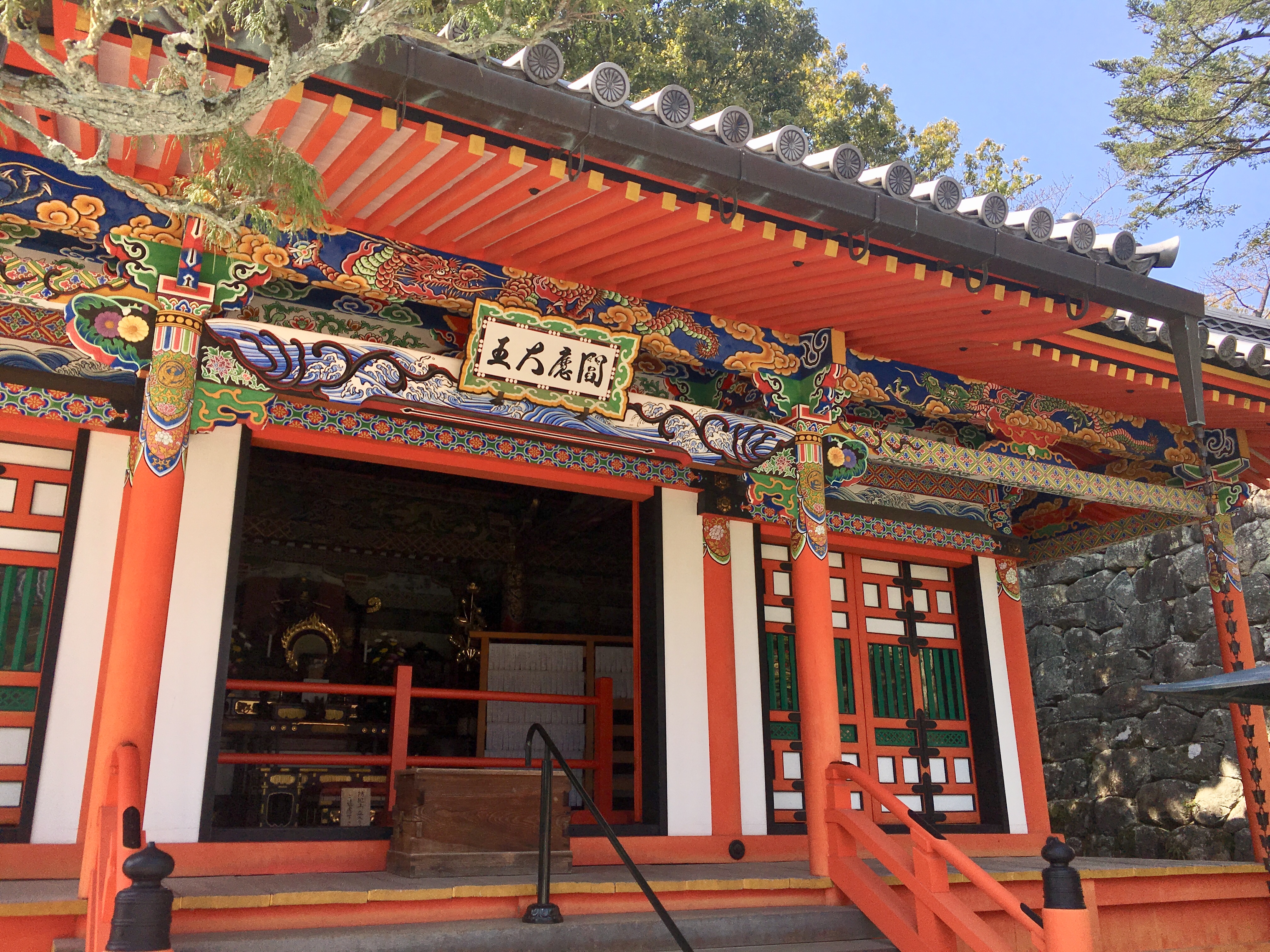
The Nakayama’s hondo is located at the top of a tall slope, but don’t worry, you can always take the escalator!
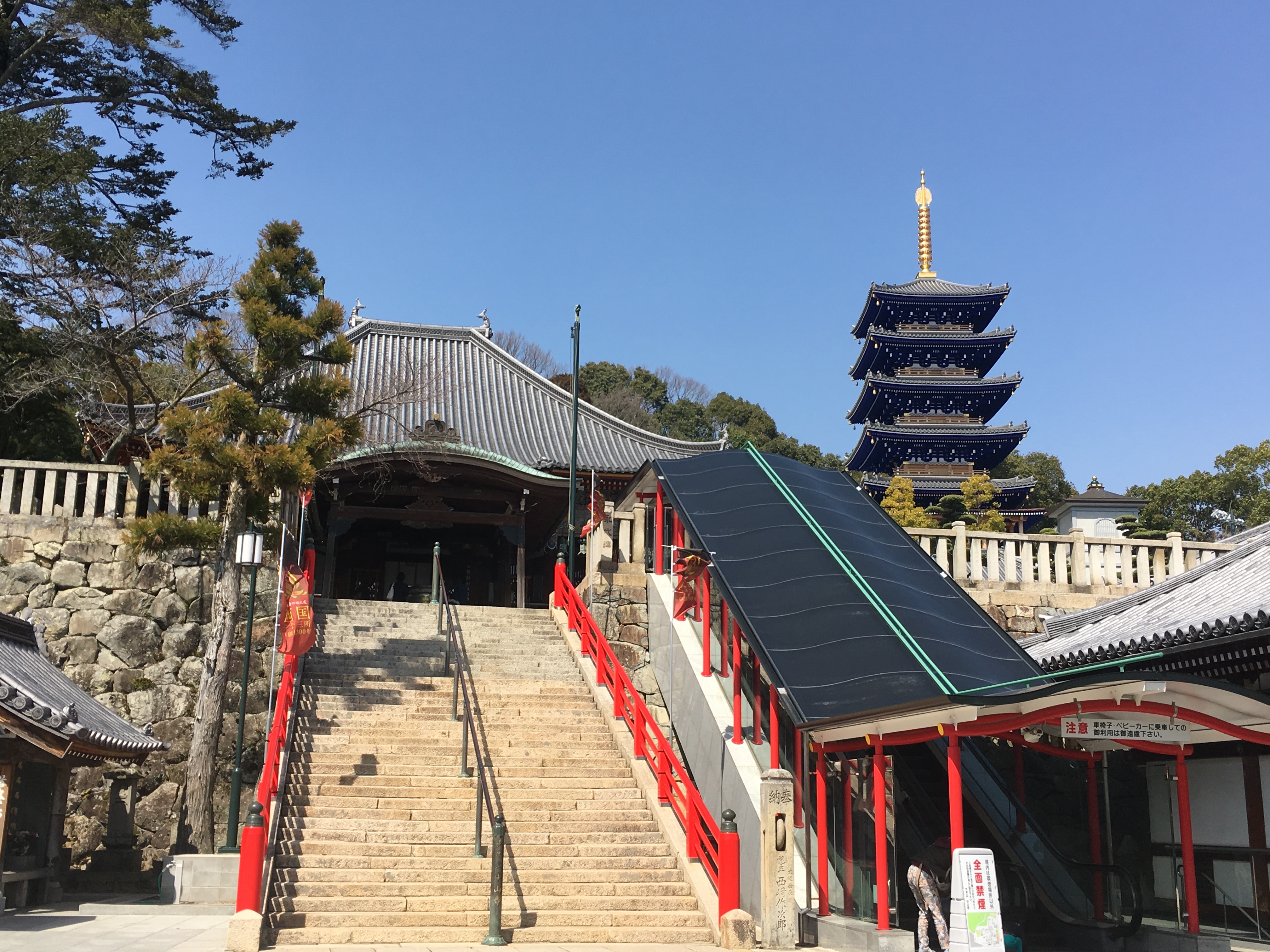
Once you go up the escalator, you will reach the Hondo. Nakayama-dera’s Hondo is very colorful and full of paintings of legendary animals.
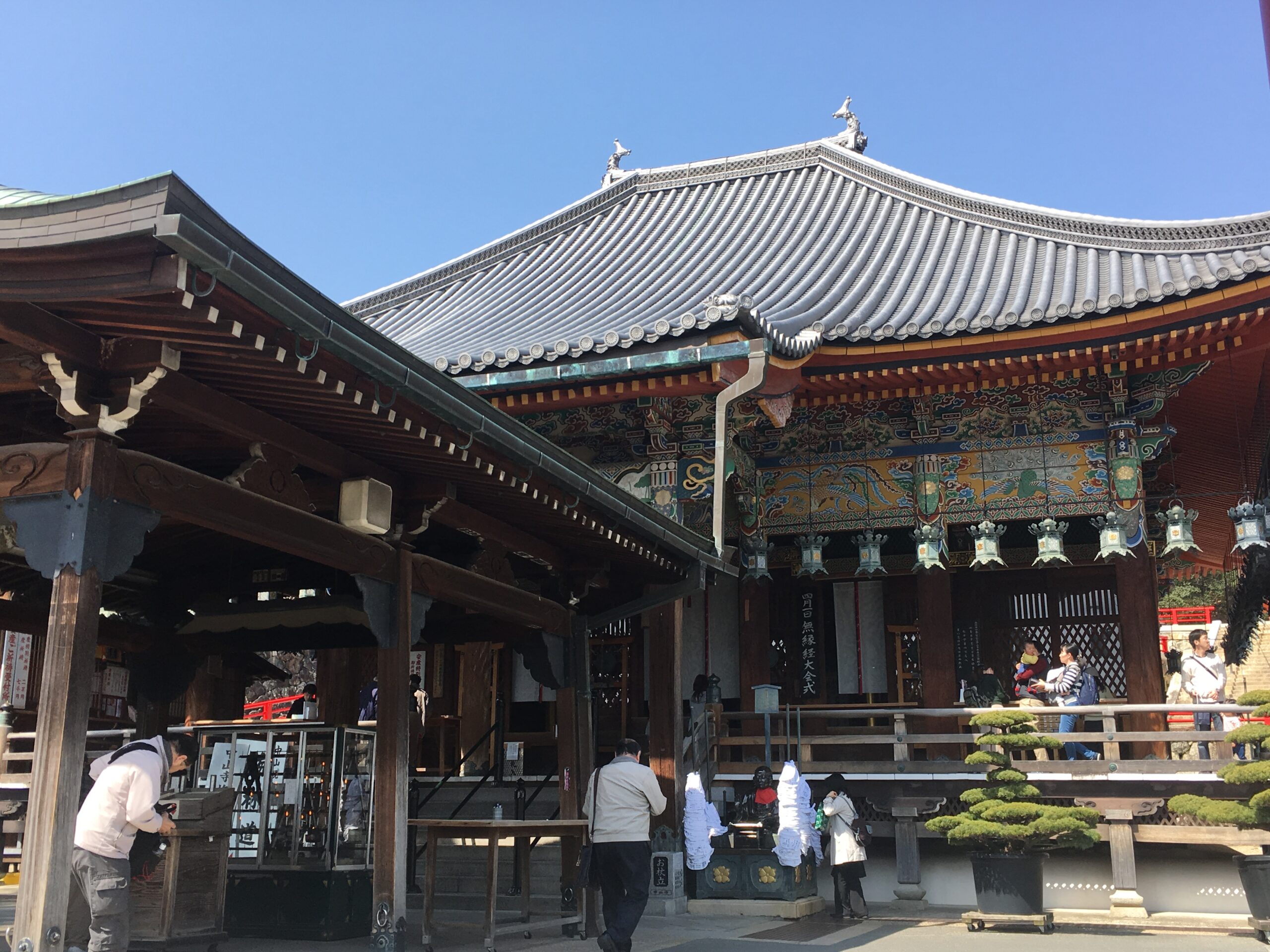

Nakayama’s hondo enshrines an eleven-faced statue of Kannon Bosatsu from the Heian Period. An interesting fact about the statue is that has a strong resemblance to Queen Shrimala, an key figure in Buddhism. You can go an see the statue for yourself on the 18th of any given month.
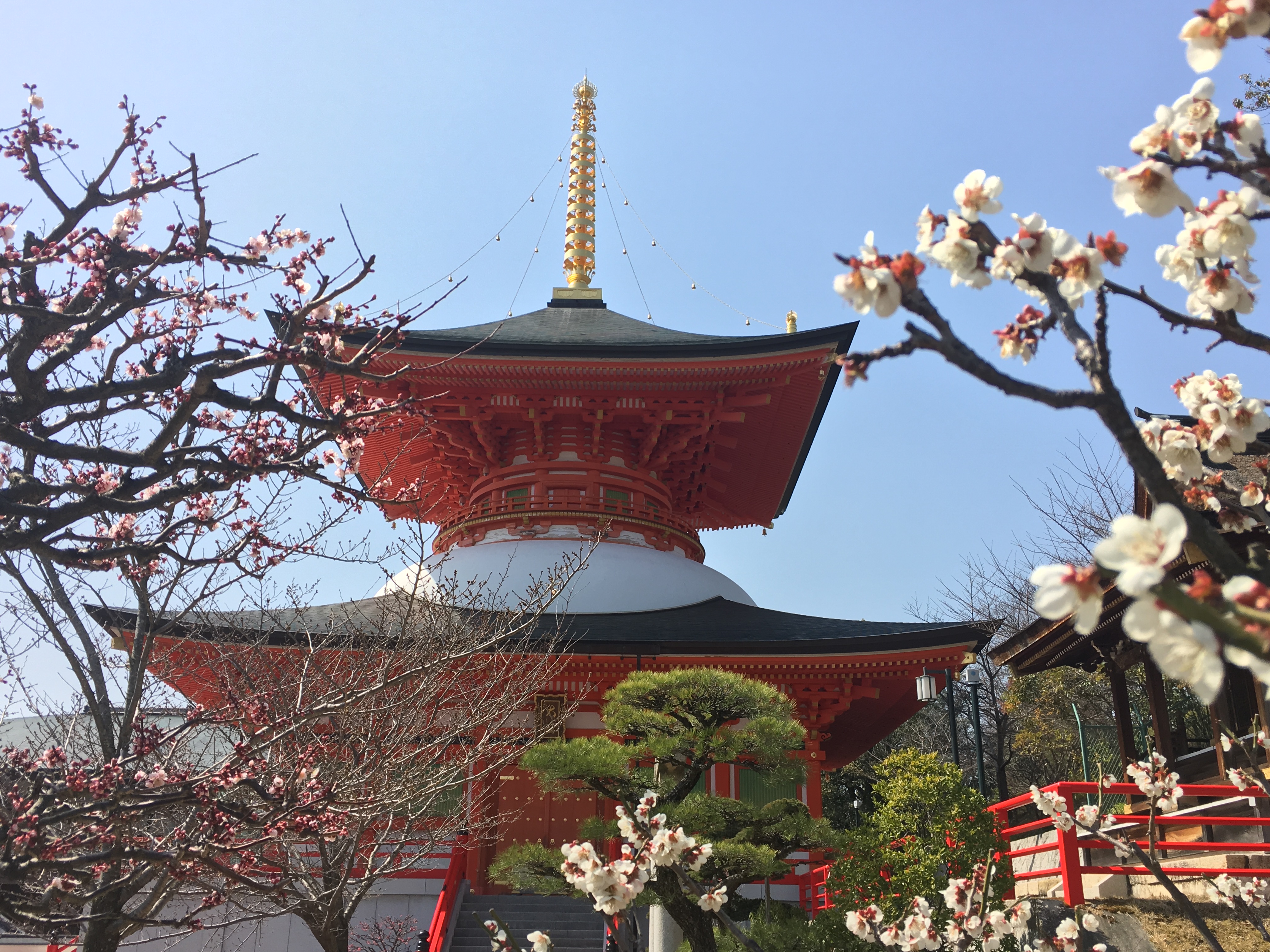
There is almost always a pagoda in a temple, but Nakayam-dera’s pagoda is very eye catching! Modeled after the original pagoda that stood there 400 years ago, this new pagoda is still very new. What is really shocking about this pagoda is that–it’s blue!

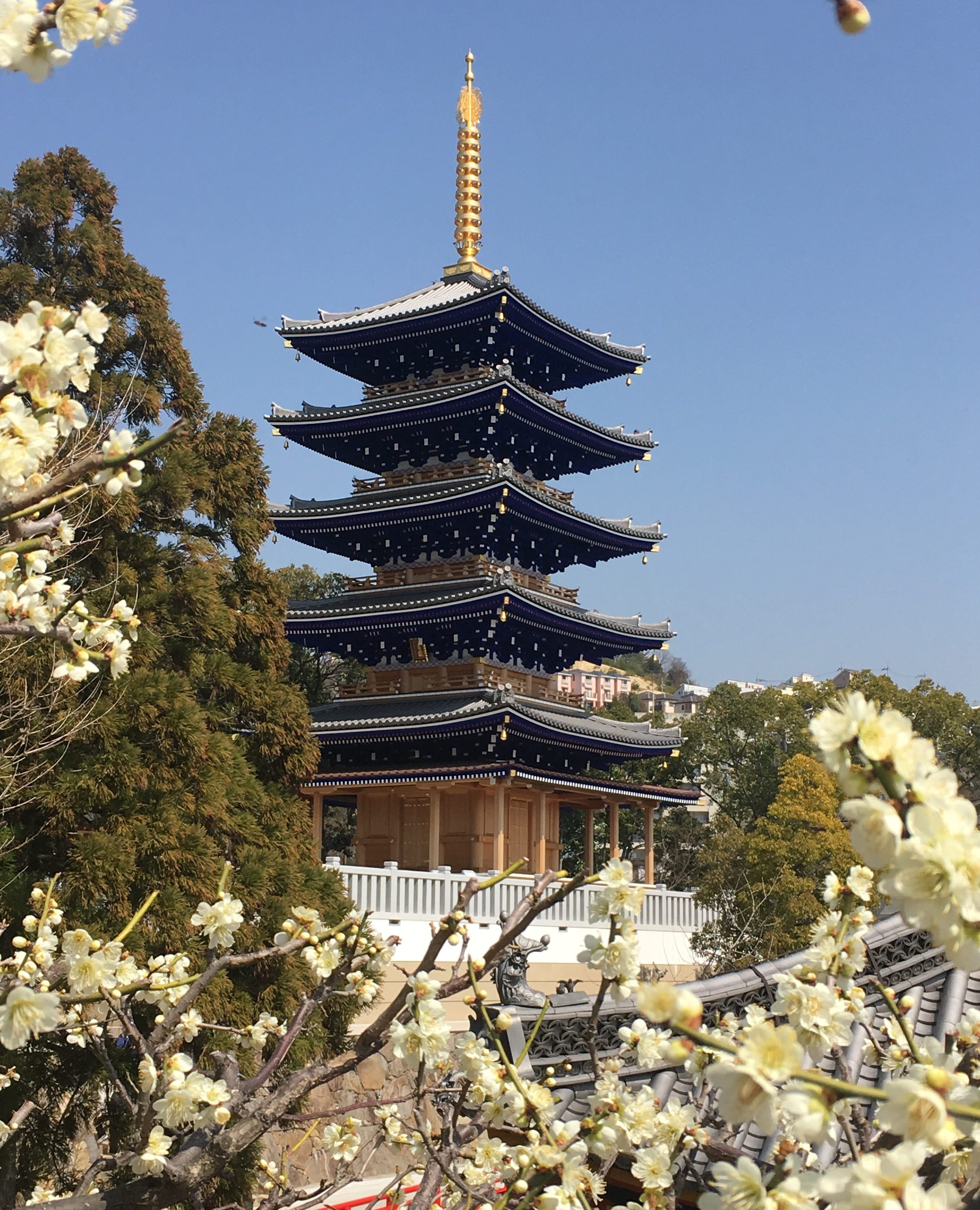
We’ve been to a lot of temples (obviously) and have never seen a blue pagoda before. The blue color blue represents the blue dragon that protects the teachings of Buddha.
Points of Interest
Hasu Gohan [蓮ごはん]
When you visit Nakayama-dera, you must try hasu gohan. This large rice ball is made of steamed mochi rice and wrapped by lotus (hasu) leaf. The rice contains a number of tasty ingredients like gingko nuts, pickled yukina, goji berries, and thin strips of fried tofu.
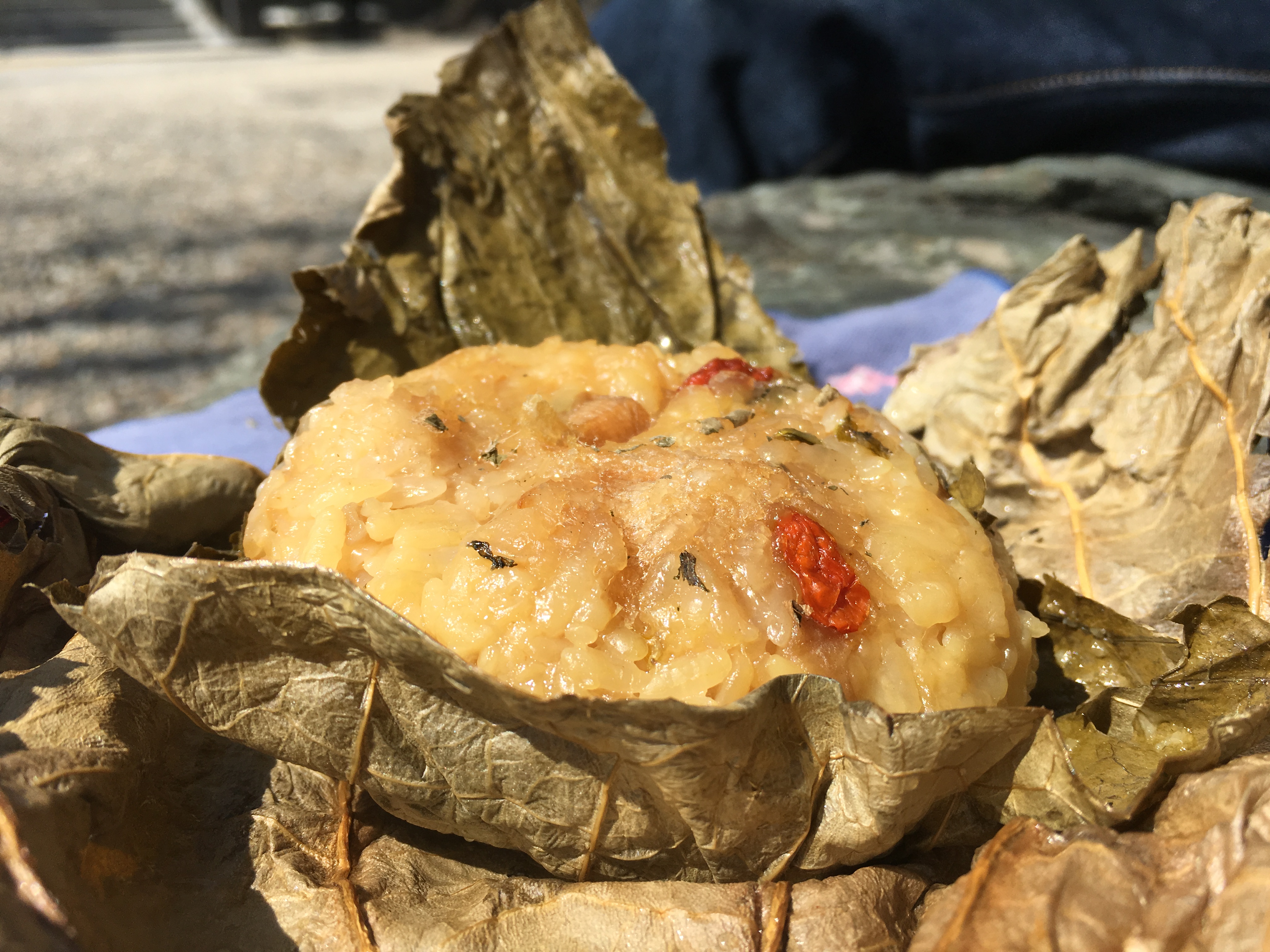
Hasu gohan is quite popular. We were lucky enough to get the last one when we visited the temple around noon. Though it looks a little small, it is actually quite filling since it is made from mochi rice. Be sure to give it a try if you can get one in time!
Information: Nakayama-dera Temple
| Address |
2-11-1 Nakayamadera, Takarazuka City, Hyogo Prefecture
|
| Website |
|
| Getting To |
Take the Hankyu Takarazuka Line from Umeda (i.e. Osaka Station) to Nakayama Kannon Station. It’s only 20 minutes and the temple is only a ten minute walk from the station. Alternatively, you could use the JR Takurazuka Line and get off at Nakayama-dera Station. The JR station is a little bit further away than the Hankyu station, but all in all, it’s not that far; only about 20 minutes.
|
| Hours |
9:00-17:00
|
| Admission |
Free
|
| Note |
|
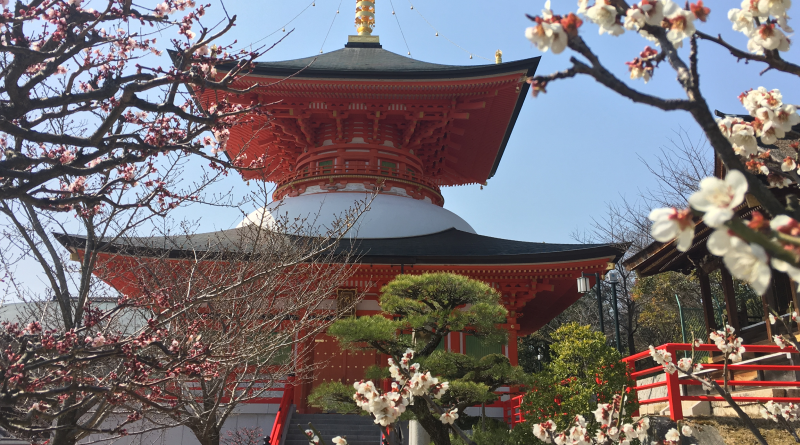
Leave a Reply